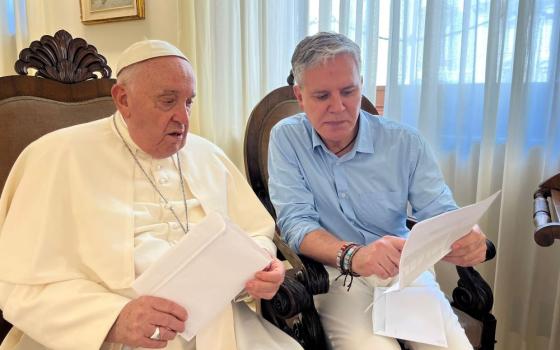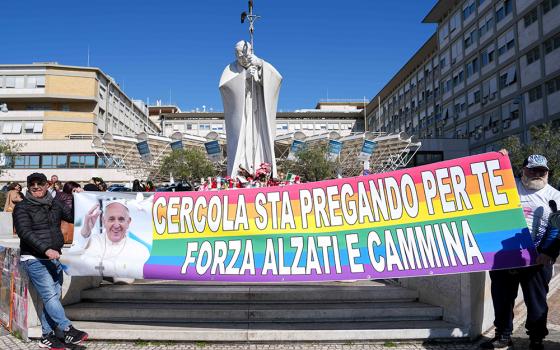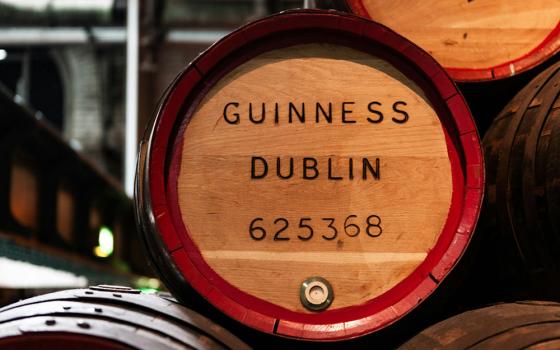

“You have changed my mourning into dancing” (Psalm 30:12).
Third Sunday of Easter
Acts 5:27-32, 40b-41; Ps 30:2, 4, 5-6, 11-12, 13; Rev 5:11-14; Jn 21:1-19
The two important stories from the fourth Gospel that have graced our liturgies these past two Sundays are de facto contemporary resurrection accounts. That is, they are addressed to Christians who were not eyewitnesses to the events, and therefore to us.
The story of Thomas, read last Sunday, and the story read this Sunday about Peter and the disciples who go fishing, address two key questions all later believers have had about the Risen Christ.
The first is this: If Jesus appears in mysterious ways or in a stranger, how will we know “It is the Lord.” One hint is that it is only the “disciple Jesus loved” who recognizes him. Love has something to do with being able to see and know it is Jesus. The second question follows: If we do encounter Jesus and know him as Lord, what would this mean in our lives? What would such a grace ask of us in sharing Jesus’ mission to the world?
The two stories, which come at the end of the Gospel, suggest that there is more to the resurrection appearances than direct, physical evidence available to anyone who was present, that “seeing” and “knowing” that Jesus is “the Lord” include another dimension we call faith.
Otherwise, why didn’t Peter and the other disciples know immediately that the stranger was Jesus? Or in the Thomas account, why did the disciples in the upper room think it was a ghost and not know Jesus until he showed them his hands and feet? Thomas seeks physical proof but does not need it when he meets his “Lord and God.”
The stories’ subtle details are deliberate, and the author adds them to move his audience beyond a literal understanding of the resurrection as resuscitation of the dead Jesus or the continuation of his former life. Jesus returns to them transformed. The ultimate I AM sign is not that Jesus is alive again, but that he is our Lord and God. Jesus is the Resurrection and the Life. By his suffering and death, Jesus fulfilled the Law and the Prophets for the forgiveness of sin. He has overcome death itself and opened the way to our own transformation so we can know God and share in the divine Life.
Back to the question: How will we know it is the Lord? These appearance stories affirm that, with eyes of faith, minds and hearts open to the Scriptures and to the Breaking of the Bread, Jesus can and does appear again and again in the lives of believers. There is no limit to his transforming power breaking into our world, turning ordinary experiences and strangers into fleeting yet enduring glimpses of Jesus, gone before us into our daily lives, preparing breakfast for tired disciples who have fished all night and caught nothing, extending his wounded hands to us in our suffering. “It is the Lord.”
The rehabilitation of Peter from abject failure to leader of the Apostles is the answer to the second question: What will seeing the crucified and risen Jesus ask of us? Peter’s threefold denial of Jesus should have utterly disqualified him, but in the stunning revelation that Jesus is Lord and God, his failure is what qualifies him to lead the church to proclaim God’s mercy and forgiveness.
Who better to witness to this unconditional love than Peter, who abandoned Jesus in his hour of deepest need, who cowered in shame as his friend was led away to die? If Mercy can reclaim Peter, it can save the world. If God’s love can heal his broken heart and bring him through his baptism of tears of regret and self-rejection, it can draw anyone back from the edge of despair and make them an emissary of reconciliation and peace to others.
If we are ready to be such an emissary, then we are ready to ask Jesus to reveal himself to us and to give us the faith to see him and know him as our Lord and God.
Advertisement







